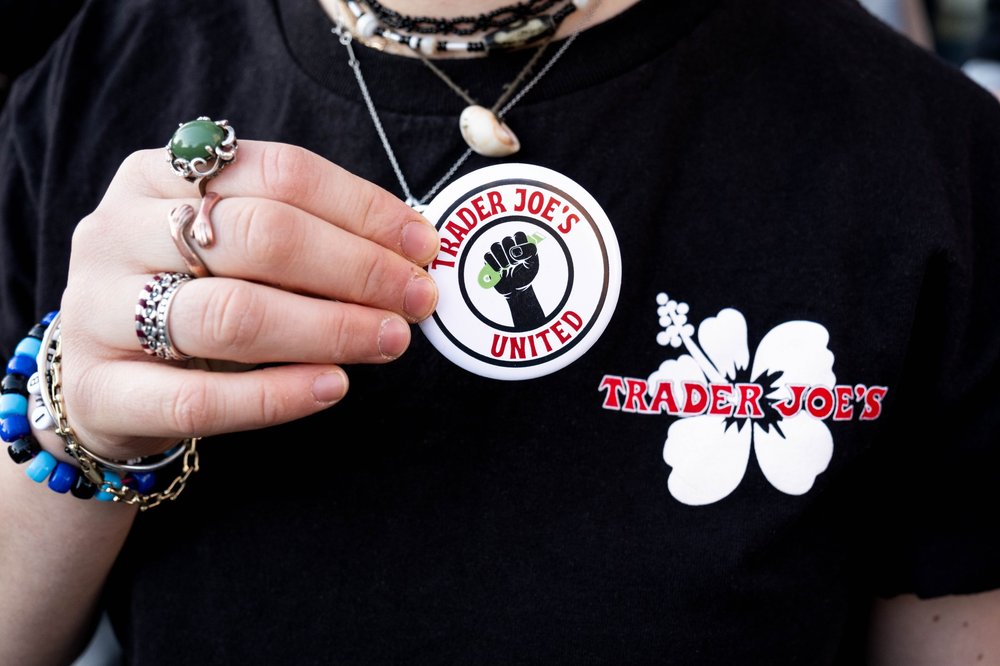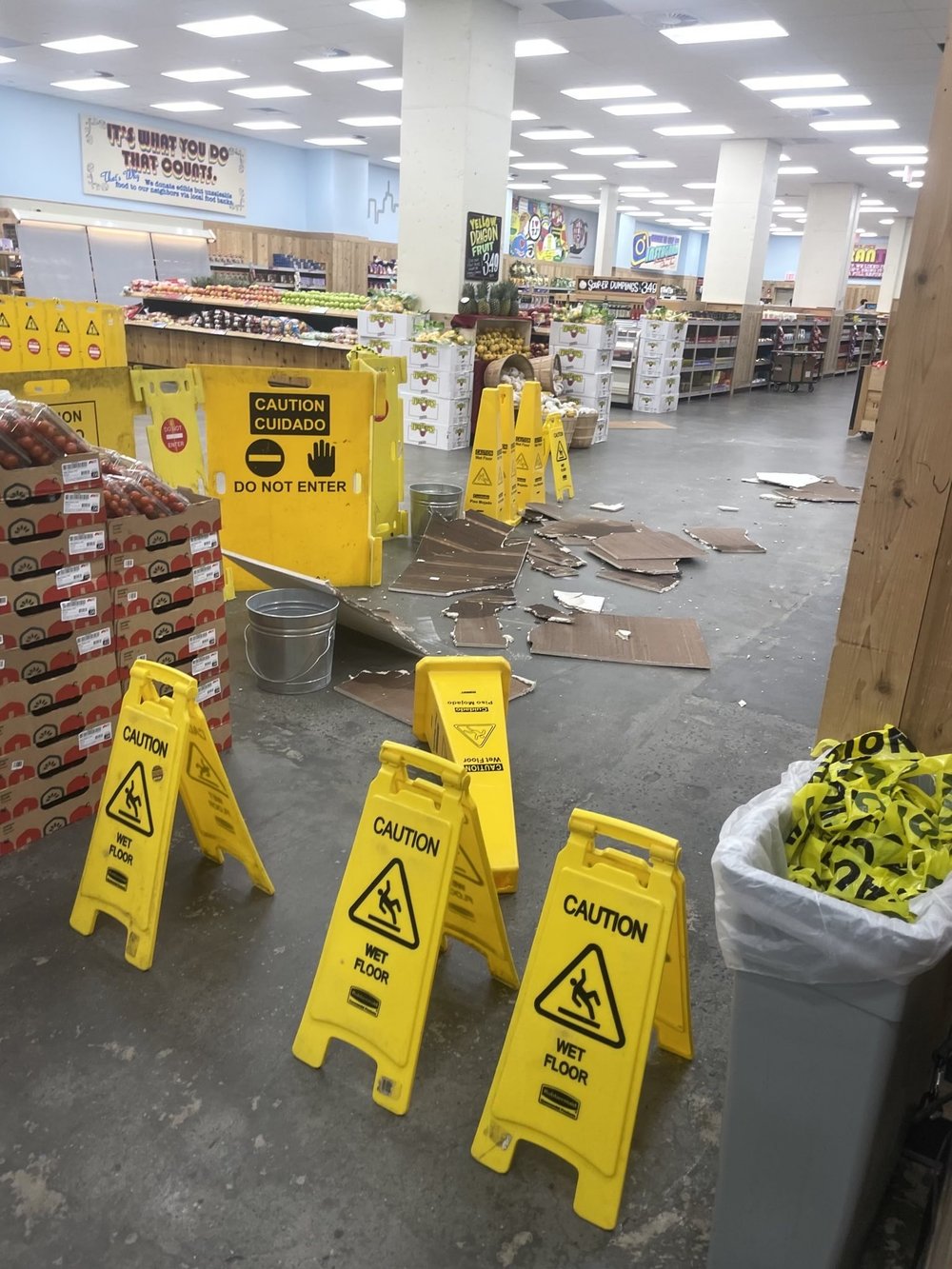Sewage, safety, sick leave: Why workers at a Manhattan Trader Joe's want a union
March 22, 2023, 9:50 a.m.
If employees vote to form a union, it would be New York City’s first unionized Trader Joe’s.

On a Friday earlier this month, what appeared to be raw sewage seeped down from the ceiling of the Essex Crossing Trader Joe’s store on the Lower East Side, breaking through parts of the ceiling and dribbling down onto some of the food below.
Managers shut down the store temporarily. But workers said the situation caused hours of confusion — some risked exposure to the sewage as they helped throw out the spoiled items, while others were sent home early or told not to show up at all, but later found their pay had been docked.
For some of the store’s employees, the situation underscored their need to form a union to be able to ask questions and demand answers about pressing workplace concerns in a unified way.
“There seemed to be no procedures from corporate on how to deal with these kinds of issues in the workplace,” said Bridget Arend, 25, who’s worked at the location for the last four years. “There are still holes in the ceiling. It still smells like sewage. This is the kind of safety concern that happens frequently at our store.”
On Wednesday morning workers plan to submit a petition to the National Labor Relations Board, and make their request for a union official, according to several organizers involved in the campaign. The NLRB typically reviews and verifies petitions and then sets an election date within several weeks. A spokesperson for Trader Joe’s didn’t immediately return a request for comment on the union drive, or the ceiling leak.

Workers are seeking to join Trader Joe’s United, a start up campaign that’s just under a year old, led by grocery store workers not associated with any established national union. Last summer, grocery stores in Hadley, Massachusetts and Minneapolis unionized the company’s first stores with Trader Joe’s United. Workers in Louisville, Kentucky followed suit in February, though Trader Joe’s is contesting those election results.
Trader Joe’s United is in the process of bargaining for their first contract and workers are pushing for wage increases, more paid time off and sick leave, among other proposals.
An official union election date for the Lower East Side Trader Joe’s has yet to be determined, but if a majority of the roughly 150 employees opt to join, it would be New York City’s first unionized Trader Joe’s.
There have been several unsuccessful attempts to unionize at different store locations in recent months. Trader Joe’s popular 14th Street wine shop shut down ahead of a planned union campaign last summer. Last fall, workers in Williamsburg voted not to unionize. But employees at the Lower East Side store say they’re undaunted by the headwinds.
“There’s so much excitement and energy in the store that’s really where all of our focus is,” Arend said.
Organizing efforts at the Lower East Side Trader Joe’s date back two years, workers said, when some managers started suddenly rolling back some of the gains employees had made during the start of the pandemic.
When essential workers were greenlighted for vaccination in March 2021, management took down social distancing signs and plexiglass without any advanced warning, according to Gabriel Medrano, 29, another worker organizer at the Lower East Side location.
“They were taken away overnight, while none of us were in the store, without telling us that it was going to be done,” he said. “We were very angry at our store. We had heated group meetings with our manager. It didn't really lead to anything.”
Then that spring the company cut back the additional $4 an hour in hazard pay it had been paying workers for several months, just as inflation started to soar. Workers started to realize that other long-standing issues — like the similarity in pay between longtime employees and recent hires — were only addressed by management in reaction to public pressure, such as online petitions or unionizing efforts at other stores, Medrano said. They wanted a more sustained way to advocate for changes to the workplace, he said.
“It's only when news is breaking, when actions are taken,” Medrano said. “We'd like to see, at the local level, more transparency from management, and decision-making that really takes us into account.”